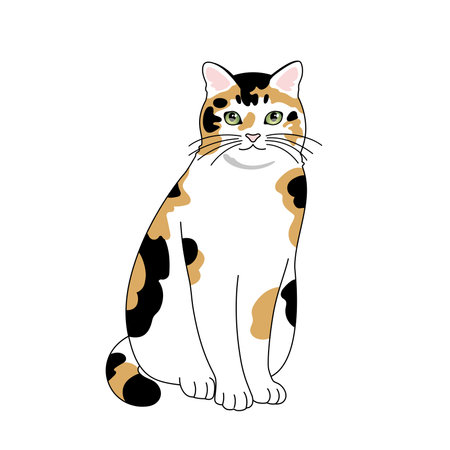Understanding Shedding and Hairballs in British Pets
Shedding and hairball formation are natural parts of life for many cats and dogs across the UK, but they can quickly become a concern for pet owners keen to maintain both their pets’ comfort and their home’s cleanliness. Recognising how these issues manifest in popular British breeds is the first step towards effective management. Breeds such as the British Shorthair cat or the Cavalier King Charles Spaniel often have dense, plush coats that shed seasonally, particularly during spring and autumn when changes in daylight trigger more pronounced moulting. Meanwhile, long-haired breeds like the Persian or the Old English Sheepdog may experience year-round shedding and are also more prone to hairball formation due to their grooming habits. Hairballs typically occur when cats, and occasionally dogs, ingest loose fur while self-cleaning, leading to uncomfortable regurgitation or digestive discomfort. Factors such as indoor heating, diet, stress levels, and even the unpredictable British weather can influence the frequency and severity of both shedding and hairballs. By understanding these patterns specific to local favourites, pet owners in the UK can better anticipate challenges and adopt strategies suited to their furry friends’ needs.
2. Proper Grooming Techniques for British Breeds
Caring for our beloved British cats and dogs means being proactive in managing their coats, especially when it comes to shedding and hairballs. The right grooming habits are vital not only for keeping your home tidy but also for ensuring the comfort and wellbeing of your furry companions. British breeds such as the British Shorthair cat or the Cavalier King Charles Spaniel often have thick, plush coats that require regular attention.
Essential Grooming Routines
Establishing a consistent grooming routine helps reduce loose fur, minimises hairball formation, and fosters a strong bond with your pet. For most British breeds, brushing should be done at least twice a week—more frequently during seasonal changes when shedding is at its peak. Regular bathing is less crucial for cats but can benefit dogs, especially those prone to muddy countryside walks.
Recommended Tools for Shedding Control
| Tool | Best For Cats | Best For Dogs | Notes |
|---|---|---|---|
| Slicker Brush | ✔️ | ✔️ | Great for removing surface hair and detangling |
| Deshedding Comb | ✔️ (short/medium hair) | ✔️ (double coats) | Lifts undercoat hair to prevent matting |
| Rubber Grooming Mitt | ✔️ (sensitive skin) | ✔️ (short-haired breeds) | Mild massaging action; gentle on skin |
| Wide-Toothed Comb | ✔️ (long-haired breeds) | ✔️ (spaniels/setters) | Helps with knots and tangles around ears/neck |
Top Tips for Managing Loose Coats and Reducing Hairballs
- Brush in the direction of hair growth: This is gentler on your pet’s skin and more effective at removing loose fur.
- Treat grooming as bonding time: Use soothing words and gentle strokes, especially important for nervous pets.
- Tidy up immediately after grooming: Use a handheld vacuum or lint roller to collect stray hairs from sofas and carpets.
- Add fibre to diet: For cats particularly, a small amount of cooked pumpkin or specialised anti-hairball treats can help pass ingested fur naturally.
- Paw wipes and damp cloths: Wipe down your dog’s coat after walks to remove pollen, dust, and stray hairs, supporting overall cleanliness.
A thoughtful approach to grooming not only helps combat shedding and hairballs in British cats and dogs but also supports their overall health and happiness. By choosing the right tools and routines tailored to your breed’s needs, you’ll keep both your pets and your home looking their very best.

3. Nutritional Support for a Healthy Coat
In the UK, pet parents are fortunate to have access to a broad range of high-quality nutritional options designed specifically to support skin and fur health in both cats and dogs. Choosing the right diet plays a pivotal role in managing shedding and minimising hairball formation, especially considering Britain’s diverse climate and the prevalence of indoor pets.
British Diet Options for Skin and Fur Health
Many reputable British brands such as James Wellbeloved, Lily’s Kitchen, and Royal Canin offer specially formulated recipes enriched with Omega-3 and Omega-6 fatty acids, which are vital for maintaining a glossy coat and healthy skin. These foods often include ingredients like salmon oil, flaxseed, or evening primrose oil, all proven to reduce shedding and improve fur texture. For cats prone to hairballs, look for formulas labelled as ‘hairball control’—these typically contain increased fibre content to help move ingested hair safely through the digestive system.
Supplements Tailored to Local Preferences
If your pet’s current diet lacks certain nutrients, adding supplements can be an effective way to boost their skin and coat health. In Britain, products such as Yumega by Lintbells or Dorwest Herbs’ Evening Primrose Oil Capsules are trusted favourites among pet owners. These supplements are easy to administer—simply mixed into daily meals—and are well-tolerated by most pets. Always consult your local vet before introducing new supplements, ensuring they’re suitable for your animal’s unique needs.
Treats That Do More Than Please
Rewarding your pet with treats doesn’t have to undermine their health goals. Many British-made treats now feature added benefits for skin and fur health. Look out for grain-free options containing salmon, seaweed, or coconut oil from brands like Fish4Dogs or Pooch & Mutt. For feline friends, natural freeze-dried fish treats provide not only a high-value reward but also a natural source of essential fatty acids. Opting for these locally available choices ensures your pet enjoys both taste and tangible coat improvements.
4. Creating a Fur-Friendly Home Environment
Maintaining a clean and comfortable home while living with cats and dogs is a challenge familiar to many British pet owners, especially when it comes to managing shedding and hairballs. Here are some practical tips that can help you keep your household tidy, protect your furnishings, and ensure the well-being of both your family and pets.
Household Cleaning Strategies
Pet hair tends to accumulate on carpets, sofas, and clothing. Regular cleaning routines can make all the difference. Vacuuming at least twice a week with a vacuum designed for pet hair is essential—look for models with HEPA filters, which are particularly popular in the UK for their ability to trap allergens. Lint rollers and rubber gloves are handy tools for quickly removing fur from upholstery or bedding.
Recommended Cleaning Frequency Table
| Area | Cleaning Tool | Frequency |
|---|---|---|
| Carpets & Rugs | Pet Hair Vacuum | Twice Weekly |
| Sofas & Upholstery | Lint Roller/Rubber Glove | As Needed |
| Bedding & Throws | Washable Covers | Weekly |
Selecting Pet-Safe Cleaning Products
British households are increasingly conscious of using cleaning products that are safe for pets. Many high-street brands now offer non-toxic, fragrance-free options that effectively remove stains and odours without exposing pets to harsh chemicals. Look out for labels such as “pet-safe” or “veterinarian approved.” A few trusted names include Ecover, Method, and Bio-D—all widely available in the UK and praised by local pet lovers.
Top Tips for Managing Pet Hair in Your Home:
- Choose machine-washable covers for sofas and beds to simplify cleaning.
- Place washable mats at entryways to catch loose fur before it spreads indoors.
- Brush your pets regularly outside or in an easy-to-clean area to minimise indoor shedding.
A fur-friendly home environment not only keeps things tidy but also helps reduce stress associated with constant cleaning. By incorporating these UK-inspired tips into your daily routine, you’ll find it easier to enjoy life with your beloved cats and dogs while keeping shedding and hairballs under control.
5. Spotting Problems Early and When to Consult Your Vet
While some shedding and the occasional hairball are part of life for British cats and dogs, it’s important to know when these issues become a cause for concern.
Recognising Abnormal Shedding and Persistent Hairballs
Excessive or patchy fur loss, bald spots, reddened skin, or your pet constantly scratching may signal underlying health issues such as allergies, parasites, or skin infections. Similarly, if your cat is frequently coughing up hairballs—especially more than once a week—or showing signs like constipation, vomiting, or loss of appetite, it could indicate a problem that needs attention.
When to Seek Professional Advice
If you notice these warning signs, don’t hesitate to reach out to your local vet. British veterinary practices are well-equipped to diagnose and treat common conditions related to shedding and hairballs. It’s always better to err on the side of caution; early intervention can prevent minor problems from becoming serious health concerns.
Accessing Local Veterinary Services
In the UK, you can easily find qualified veterinary professionals through the Royal College of Veterinary Surgeons (RCVS) website or by asking neighbours for recommendations. Many local practices also offer advice lines or nurse clinics where you can get guidance without needing a full appointment. For ongoing support, consider joining British pet owner communities online or locally—these often share trusted resources and personal experiences that may be helpful.
By staying attentive to changes in your pet’s shedding or hairball frequency and knowing when to consult your vet, you’ll be taking proactive steps towards keeping your furry companion healthy and comfortable all year round.


